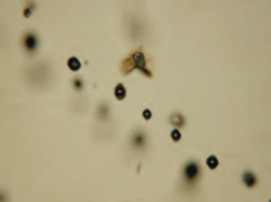High-Precision Geochronology of LIP Intrusions: Records of Magma–Sediment Interaction
Reconstructing the tempo and emplacement mechanisms of large igneous provinces (LIPs) and establishing potential links to environmental change and biological crises requires detailed and targeted high-precision geochronology. Contact metamorphism during LIP intrusive magmatism can release large volumes of thermogenic gas, so determining the timing of these events relative to global climate change is crucial. The most reliable age information comes from U-Pb geochronology; however, LIP mafic igneous rocks do not commonly crystallize U-bearing minerals, such as zircon or baddeleyite. Recent work has shown that U-rich minerals can crystallize in fractionated melt pockets in intrusive components of LIPs after contamination of the melt by sedimentary rocks at emplacement level. Zircon and baddeleyite from these pockets make high-precision U-Pb geochronology of LIPs possible, but these unique mechanisms add other complexities.
High-Precision Geochronology of LIP Intrusions: Records of Magma–Sediment Interaction Read More »




